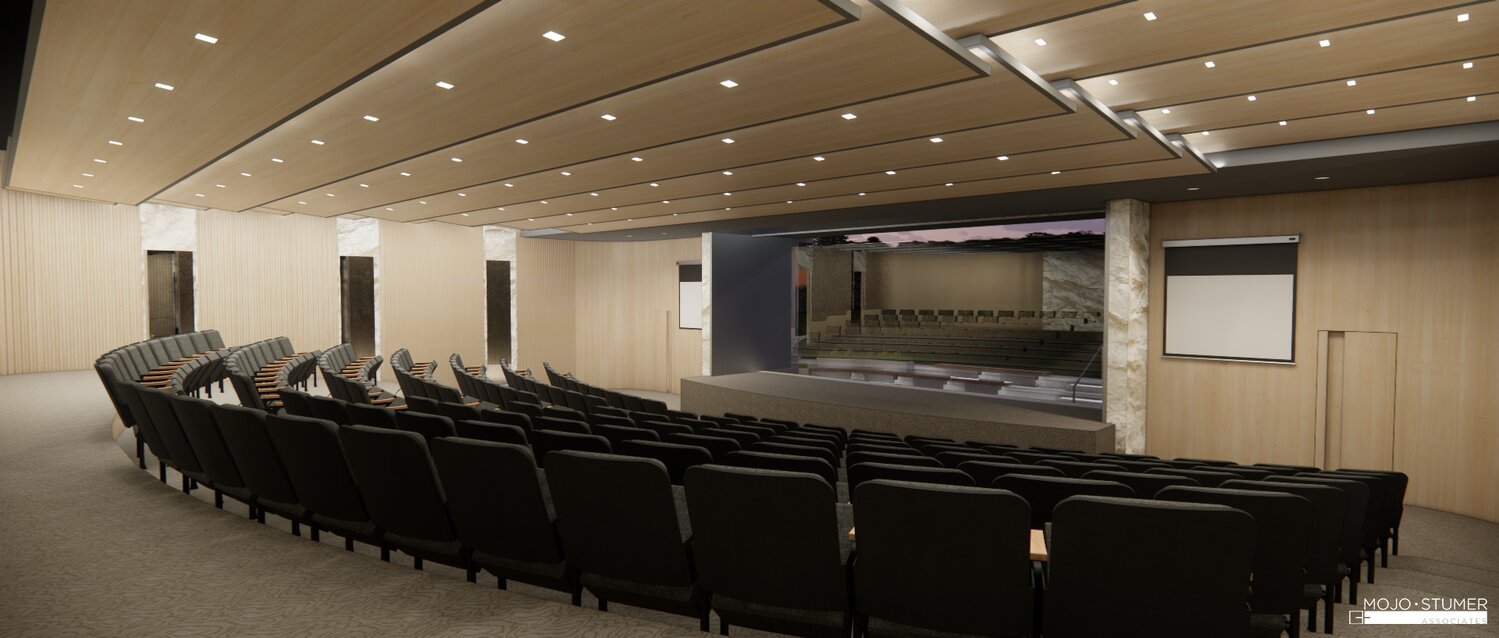Holocaust Memorial and Tolerance Center to make room for more
The Holocaust Memorial and Tolerance Center is constructing an auditorium to increase the number of visitors they can accommodate. With the increasing amount of antisemitism in the state, they say education is an essential tool to combat hateful acts.
PBS reports that antisemitism rose in the United States in 2022 and “shows little sign of abating worldwide.” Based on a report released by Tel Aviv University’s Center for the Study of Contemporary European Jewry and the U.S.-based Anti-Defamation League. Researchers claim that political radicals have gained mainstream popularity.
In recent years, the center has experienced an uptick in antisemitic instances, such as swastikas spray painted on the center’s property.
“We understand that what we provide is something so important for our community,” Mojgan Pourmoradi, the new director of the center said. “We want to make it accessible to as many people as possible.”
Beginning in the 1880s, entrepreneur and philanthropist Charles Pratt acquired nearly 1,100 acres of land in Glen Cove. As they married, Pratt gifted each of his six sons and daughters’ portions of the coastal property to build summer residences. Welwyn Preserve on Crescent Beach Road was passed down to Nassau County in 1969. The mansion and immediate surroundings became home for the Holocaust Memorial and Tolerance Center in 1992, while 204 acres are a preserve of wooded trails leading to the Long Island Sound shore.
Joe Yacobellis the senior associate and director of design for MOJO.STUMER + ASSOCIATES in Greenvale said the design centers around a modern aesthetic, and will resemble a “glass enclosed, jewel box.” He said they’re looking to emphasize how significant it is with the design. The structure will be connected by a “glass box.” When visitors walk into the main lobby under the main staircase there will be a large set of double doors which will link the rear of the museum to the structure via a glass framed narrow corridor.
“The design is kind of intended be almost like a box within a box,” Yacobellis explained. “If you view the building from the grounds from the outside, it’s an all-glass facade with a very thin floating roof. It’s meant to be very light and be very different, like a floating in landscape.”
Within the “glass box” visitors can expect to see a series of wood walls that houses the actual auditorium where visitors can move around the perimeter of the building along the glass wall. There will be hallways that will take visitors out and around into the rear amphitheater. Once inside the auditorium itself, visitors are within that inner box of wood walls and inside the auditorium space. Within that inner box of wood walls will be Jerusalem stone panels, which will have inscriptions of engraved names of victims of the Holocaust. Yacobellis added there will be an opportunity for more “remembrance elements.”
“Our intention was for the new building to be distinctly different from the existing building,” Yacobellis said. “The fact that it’s this sort of glowing glass box is in significant contrast to the heaviness and the solidness of the existing brick building. It was always our intention for this building to have a very clear separate identity from the existing building.”
Howard Maier, chairman emeritus of the museum’s board, said the center underwent extensive renovations about 20 years ago. The 100-year-old kitchens that were no longer in use were removed. The heating and air conditioning systems were updated as well as the second floor with excessive rotting, as well as an update of the leaking roof.
“We put in a state-of-the-art museum, after we did the renovation,” Maier said. “As part of the renovation we put in a handicap accessible elevator from the basement to the third floor, and we did not have a functioning elevator prior. All those renovations were done, as well as putting in the new museum. We were closed for about 18 months.”
The center already has a designated room inside the building for speakers and presentations which accommodates about 80 people, but Maier said the auditorium will almost double the capacity.

 56.0°,
Overcast
56.0°,
Overcast 







